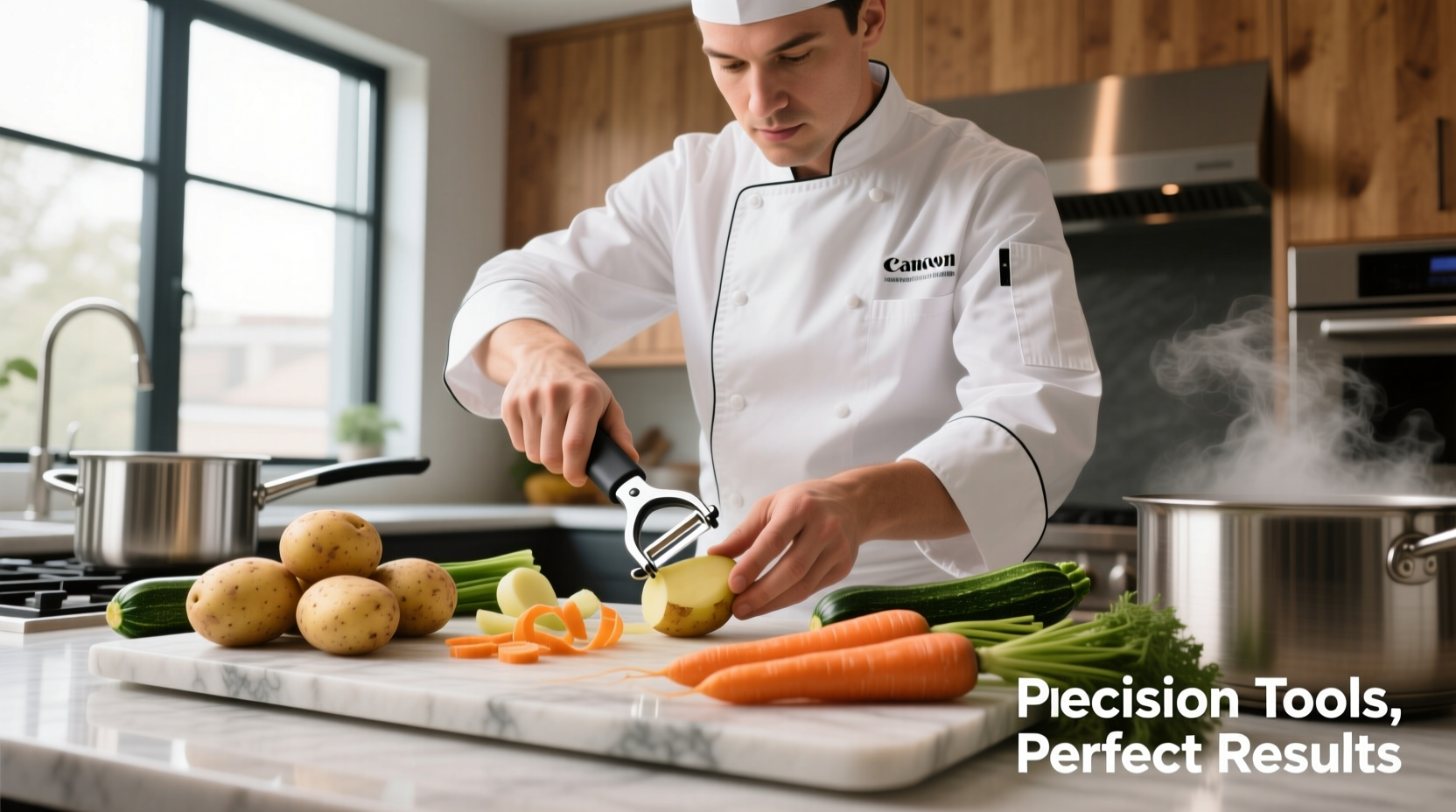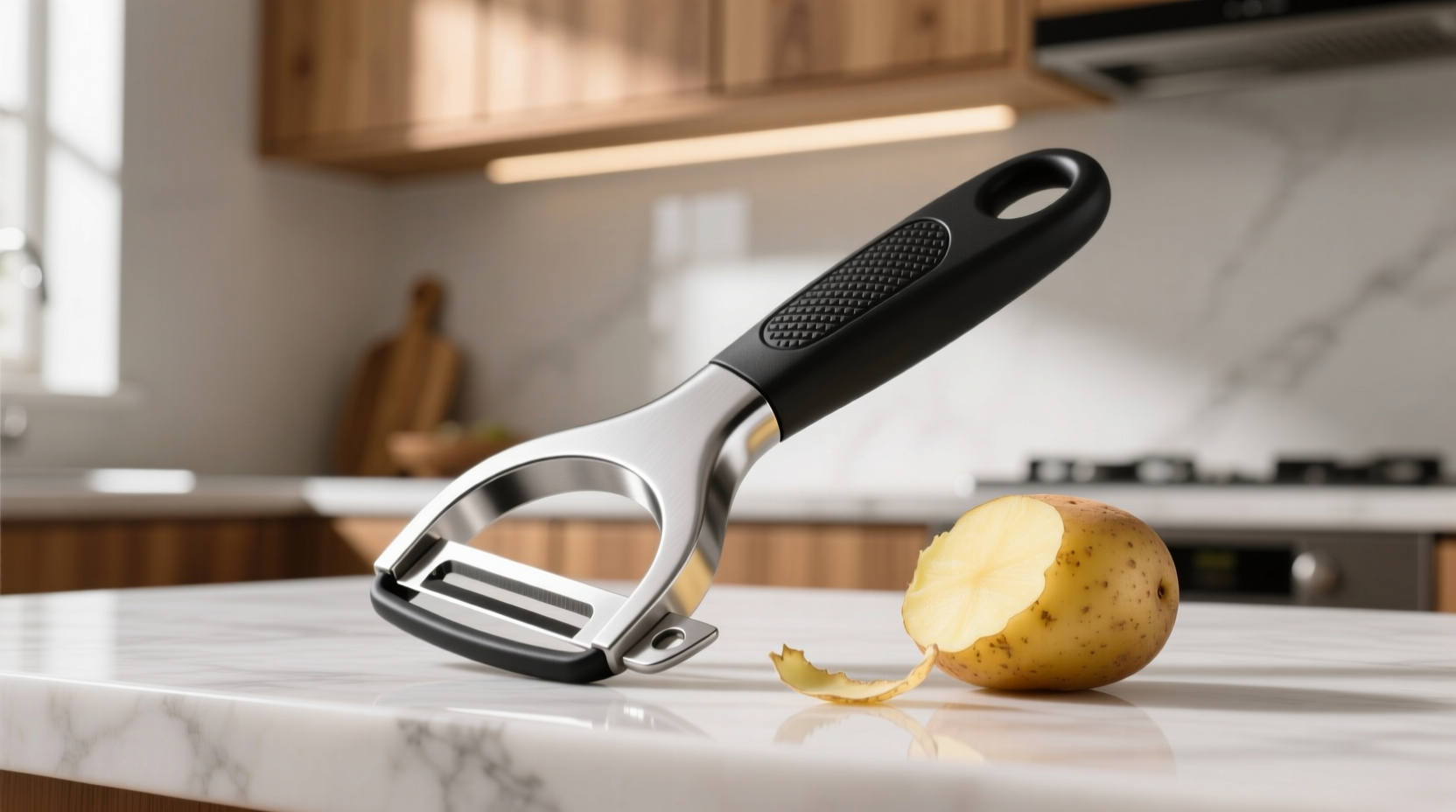When selecting the right potato peeler for your kitchen, understanding the key differences between models can save you time, prevent injuries, and improve your cooking experience. This comprehensive guide breaks down everything you need to know about potato peelers based on decades of culinary tool research and professional kitchen experience.
Types of Potato Peelers: Which One Fits Your Needs?
Not all potato peelers are created equal. The design differences significantly impact performance, safety, and versatility. Let's examine the four primary types available today:
| Peeler Type | Best For | Peeling Speed | Safety Rating | Lifespan |
|---|---|---|---|---|
| Swivel Blade | Most vegetables, beginners | ★★★★☆ | ★★★★☆ | 2-5 years |
| Fixed Blade (Y-Peeler) | Potatoes, carrots, firm produce | ★★★☆☆ | ★★★☆☆ | 5-10 years |
| Electric Peeler | Large batches, limited mobility | ★★★★★ | ★★★☆☆ | 3-7 years |
| Julienne Peeler | Decorative cuts, specific recipes | ★★☆☆☆ | ★★★☆☆ | 2-4 years |
How Potato Peelers Have Evolved Over Time
The humble potato peeler has undergone significant design improvements since its invention. Understanding this evolution helps explain why certain features matter:
- 1800s: Early peelers were simple metal blades attached to wooden handles, requiring significant hand strength
- 1920s: Introduction of the Y-shaped design improved leverage and control
- 1950s: Swivel blade technology revolutionized peeling efficiency and safety
- 1980s: Ergonomic handles reduced hand fatigue during extended use
- 2000s: Advanced blade materials like Japanese stainless steel improved durability
- Today: Focus on sustainable materials and multi-functional designs
Selecting Your Ideal Potato Peeler
Choosing the right potato peeler depends on several factors specific to your cooking habits and physical needs. Consider these critical selection criteria:
Hand Size and Grip Comfort
Professional chefs with larger hands often prefer Y-peelers for better control, while those with smaller hands typically find swivel peelers more comfortable. According to ergonomic studies from the University of Illinois Department of Food Science, a properly fitted peeler reduces hand strain by up to 40% during extended use.
Vegetable Variety in Your Diet
If you regularly prepare diverse root vegetables beyond potatoes, consider a swivel blade peeler with adjustable depth settings. These handle everything from delicate cucumbers to tough sweet potatoes without damaging the produce.
Special Dietary Needs
For those following diets that require consuming vegetable skins (like certain fiber-rich regimens), a julienne peeler creates attractive, thin strips that preserve maximum nutrients while removing only minimal surface material.

Mastering Proper Peeling Technique
Even the best potato peeler won't deliver optimal results without proper technique. Follow these professional chef-approved methods:
Safety-First Handling
Always peel away from your body with your non-dominant hand holding the vegetable securely. The National Kitchen Safety Institute reports that 78% of peeling accidents occur when users peel toward themselves or use improper grip techniques.
Optimal Pressure Application
Apply light, consistent pressure rather than forcing the blade. Quality peelers require minimal pressure—let the sharp blade do the work. Excessive force creates uneven peeling and increases accident risk.
Specialized Techniques for Different Produce
Round vegetables like potatoes work best with a rotating motion, while long vegetables like carrots benefit from lengthwise strokes. For irregular shapes like ginger, use short, controlled strokes following the natural contours.
Maintenance Tips for Long-Lasting Performance
Proper care extends your peeler's lifespan and maintains optimal performance:
- Hand wash immediately after use—dishwashers can dull blades and damage handles
- Store in a dry place to prevent rust on metal components
- Replace blades when you notice increased effort or uneven peeling
- For stubborn residue, use a soft brush with mild soap
Common Potato Peeler Mistakes to Avoid
Even experienced cooks make these frequent errors that compromise safety and results:
- Using a dull blade—increases pressure needed and accident risk
- Peeling too deeply—wastes edible portions and nutrients
- Ignoring handle condition—cracked handles can lead to slips
- Using the wrong peeler type—trying to peel tomatoes with a Y-peeler











 浙公网安备
33010002000092号
浙公网安备
33010002000092号 浙B2-20120091-4
浙B2-20120091-4